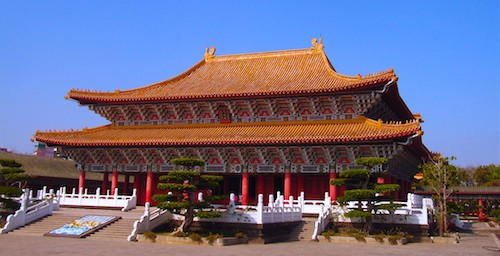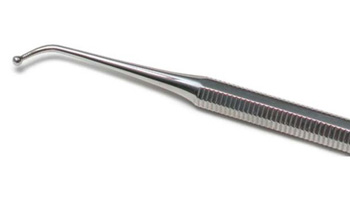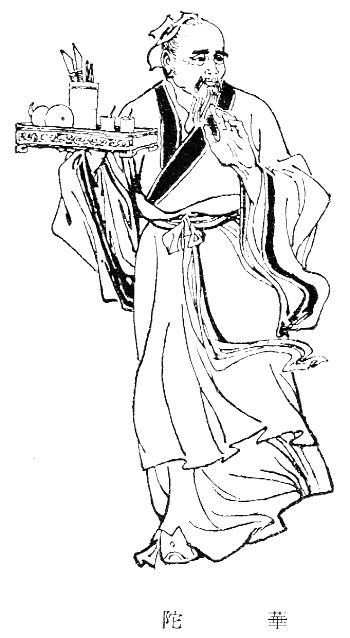
Needle Techniques and Patient Comfort
There are numerous manual acupuncture techniques. Some of them can be very useful in the clinic. Yet, there are definite issues when applying techniques such as T-shaped needling, setting the mountain on fire, penetrating heaven’s coolness and seated applications of Luozhen and Yaotongxue. Let’s go over some of these issues and benefits in detail.
Yaotongxue, also known as Yaotongdian, is remarkable for the treatment of acute lower back pain and is translated as lumbar pain point. Under different names, this point combination also appears in proprietary systems including the Master Tong system. Yaotongxue is located on the dorsum of the hand and is a set of two points. The first point is located between the second and third metacarpal bones in the depression lying immediately distal to the base of the metacarpals. The second point is located between the fourth and fifth metacarpal bones in the same depression that is distal to the junction of the metacarpals. To locate, simply slide one’s finger along the dorsum of the hand until it falls into the V-shaped groove between the metacarpal bones and the point is in the depression before the bones connect at the apex of the V-shape.
Traditionally, Yaotongxue is used to invigorate Qi and blood in the lumbar region. It is used for the treatment of acute lumbar sprain and often has miraculous and immediate effects. The difficulty is that this set of points is applied while the patient moves the lower back or rubs and pounds on the lower back. This is traditionally done while the patient is in the seated position. Therein lies the difficulty. If the patient’s Qi is weak for any reason, the patient may lose consciousness. It takes a lot of Qi to receive acupuncture in the seated position while the acupuncturist moves and disperses stagnation with manual techniques.
Make sure the patient’s condition is robust enough to receive this type of needling and check to see that they have eaten. It may also be appropriate to inform the patient that manual manipulation of Yaotongxue may be uncomfortable. In some cases, ask the patient if they are comfortable with the procedure during the process.
During the procedure always ask the patient, “Do you feel faint, dizzy, nauseas or sweaty?” If the answer is yes, remove the needles immediately and it may be necessary to have the patient lie down on the table with the legs elevated. Acupressure to Sishencong helps to stabilize the patient’s condition if the patient feels faint. Try to gauge the patient’s comfort level as well.
The grandmasters of acupuncture apply vigorous lifting, thrusting and fishing techniques to obtain de qi and to disperse stagnation. An acupuncturist may be able to apply more gentle manipulations and achieve significant results. The Nei Jing Su Wen informs us that vigorous acupuncture is appropriate for leathery skin farmers whilst supple-skin government clerks are more tender and may require a softer approach. Try to match the manual acupuncture techniques to the patient’s constitution as recommended by the Nei Jing Su Wen.
One way to minimize the discomfort and risk of loss of consciousness is to palpate the Yaotongxue points with a rounded tip probe such as an auricular location probe.  Angled Round Tip ProbeFind the points that exhibit heightened sensitivity and only needle those points. In this way, an acupuncturist may only need to use one of the Yaotongxue points thereby reducing patient discomfort and risk. Traditionally, Yaotongue is applied to both points of the left hand when the left side of the lower back is affected and vice-versa for the right side. If gentle pressure from the rounded tip probe elicits severe pain from the patient, manual acupuncture will almost assuredly clear the lower back pain when applied to the sensitive point. After the procedure, remove the needles and have the patient sit, stand and walk. Gauge the progress and reapply if the pain has not cleared and the patient maintains a quality reserve of Qi.
Angled Round Tip ProbeFind the points that exhibit heightened sensitivity and only needle those points. In this way, an acupuncturist may only need to use one of the Yaotongxue points thereby reducing patient discomfort and risk. Traditionally, Yaotongue is applied to both points of the left hand when the left side of the lower back is affected and vice-versa for the right side. If gentle pressure from the rounded tip probe elicits severe pain from the patient, manual acupuncture will almost assuredly clear the lower back pain when applied to the sensitive point. After the procedure, remove the needles and have the patient sit, stand and walk. Gauge the progress and reapply if the pain has not cleared and the patient maintains a quality reserve of Qi.
It is common to apply local manual acupuncture or electroacupuncture points to the lower back while the patient is in the prone position in the first stage of the treatment. Next, the Yaotongxue procedure is applied as a follow-up therapy. This two step approach often has a greater therapeutic effect and allows for a more gentle approach to the Yaotongxue procedure. For kidney Qi deficient patients, supine needling of K3 bilaterally to relieve lower back pain may be used in lieu of local points in the prone position. Manual manipulation of K3 is performed until the patient feels the Qi sensation rising to the lower back. If the Qi extends towards the toes, try needling towards the lower back. If manual acupuncture is too vigourous at K3 for the patient’s constitution, try bilateral electroacupuncture to K3 (Taixi). Using this as a first stage procedure often reduces the intensity required for the application of Yaotongxue and improves patient outcomes. The same first stage approach can be applied using distal acupuncture, scalp acupuncture and other micro-acupuncture techniques.
 Grandmaster Hua TouA similar approach is appropriate for the use of Luozhen, translated as stiff neck. This acupuncture point is used in a similar fashion as Yaotongxue except that the focus is on treatment of neck stiffness and pain instead of the lower back. The issues of vigorous manual stimulation in the seated position apply. No doubt, both Luozhen and Yaotongxue are miraculous points. The key is to gauge the patient’s overall condition and acceptance level of advanced acupuncture procedures.
Grandmaster Hua TouA similar approach is appropriate for the use of Luozhen, translated as stiff neck. This acupuncture point is used in a similar fashion as Yaotongxue except that the focus is on treatment of neck stiffness and pain instead of the lower back. The issues of vigorous manual stimulation in the seated position apply. No doubt, both Luozhen and Yaotongxue are miraculous points. The key is to gauge the patient’s overall condition and acceptance level of advanced acupuncture procedures.
The use of setting the mountain on fire and penetrating heaven’s coolness involves issues of manual manipulations whilst in the supine, prone, seated and other positions. These are very powerful tonifying and sedating procedures. For example, application of setting the mountain on fire to LI11 makes the arm turn red, sweaty and induces a feeling of heat in the arm. Application of penetrating heaven’s coolness to LI11 induces goose bumps (curtis anserina), paleness and a cold feeling on the arm. This combination of lifting, thrusting and twisting on three different levels requires constant attention to the patient’s ability to handle the procedure. When applied properly, it can completely transform a patient. Tonification of CV6, CV4 and CV3 with setting the mountain on fire combined with the addition of ST36 may restore Qi, Blood,Yin and Yang to a patient by restoration of Dantian. If the patient lacks the Qi to receive the procedure, it may only be possible to apply setting the mountain on fire to one acupuncture point or may require several treatments until manual stimulation is well tolerated.
T-shaped needling of LI11 is an example of an advanced acupuncture procedure that may be difficult to apply to patients given issues of Qi and comfort level. This technique is a two needle procedure wherein needle one is applied to LI11 (Quchi) and penetrates deeply towards HT3 (Shaohai). There is usually a powerful bodily response to this technique as the needle approaches the HT3 position. The other needle is a straightforward 1 cun needle applied perpendicularly to P3 (Quzu). Indications for T-shaped needling of LI11 is upper limb paralysis, shoulder and elbow pain, hypertension, sore throat, high fever, urticaria and goiter. Naturally, discomfort is not an issue for paralysis patients lacking sensation in the region. Here, it is important to gauge whether or not the patient feels nauseas, sweaty or faint during the procedure.
All this talk of advanced procedures makes me have a greater appreciation of the times we get great results with thin, short needles applied with the peaceful technique. True, sometimes the needles do all the work with very little need for stimulation. Yes, sometimes better results are achieved with fewer needles and less stimulation. That said, there are times when advanced manual acupuncture or vigorous electroacupuncture is needed. It is those times when we need to be at our very best and in constant communication with our patient and their responses to care.


